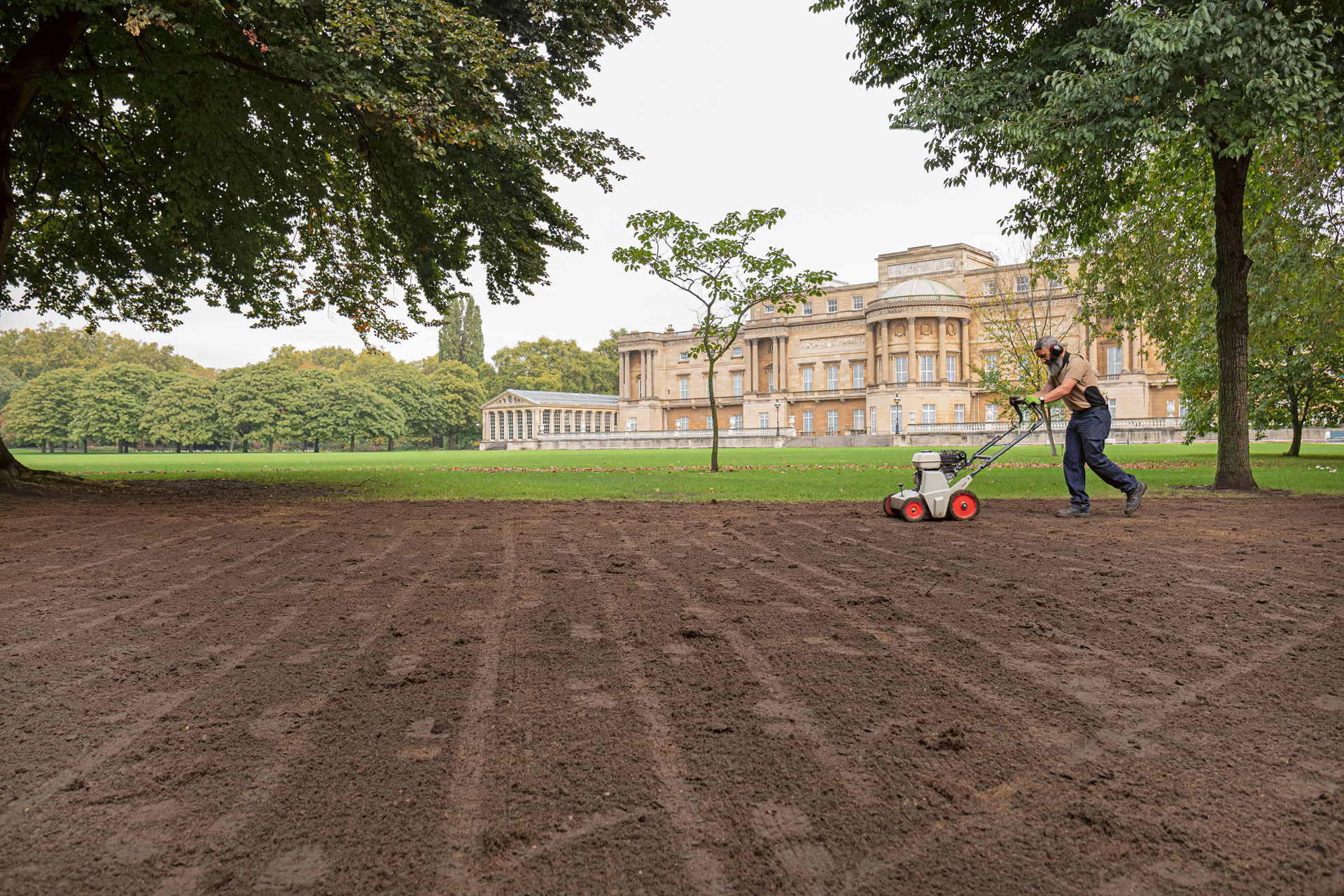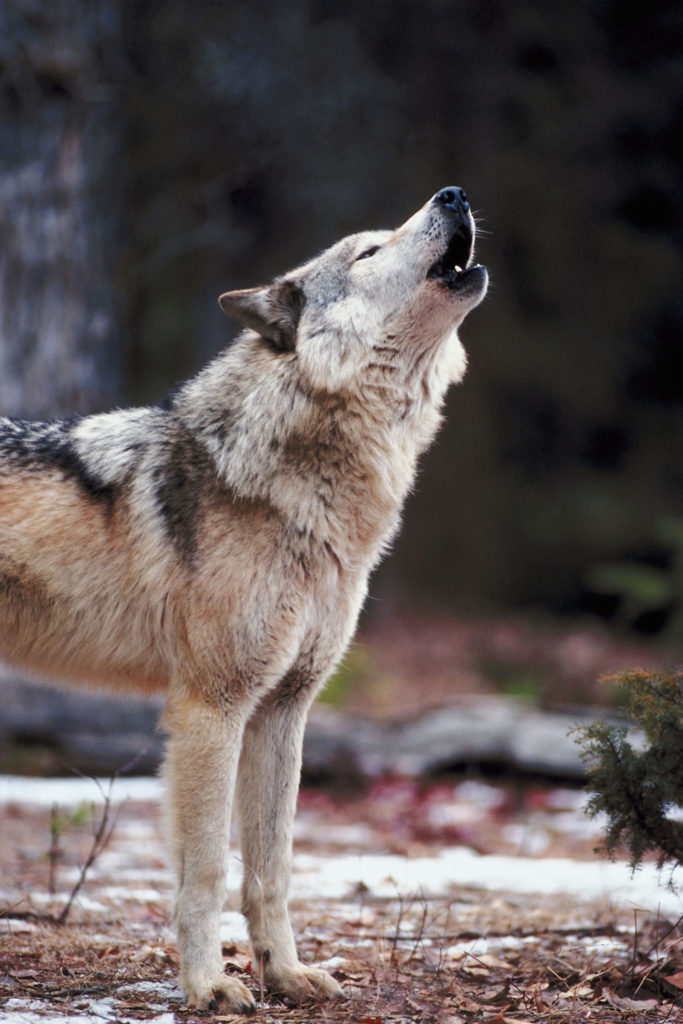A Look Inside the Gardens at Buckingham Palace
By
4 years ago
Garden writer Claire Masset takes us through a year in the royal gardens

Inevitably, it’s important to keep the 39-acre garden at Buckingham Palace looking pristine. Not only does it serve as Her Majesty The Queen’s private garden, it plays a role in the busy calendar of royal events, such as The Queen’s Garden Parties. In new book Buckingham Palace: A Royal Garden, garden writer Claire Masset explores the garden’s rich history, looking at how it changes over the course of the year. Below we share an extract.
More Royals Content / Gardening
Buckingham Palace: A Royal Garden
Spring-flowering shrubs and trees
Over the years, many resident kings and queens have appreciated the garden’s spring- flowering shrubs and trees. Queen Victoria notes in her diary on 13 May 1843: ‘It was so fine in our pretty garden, with all the azaleas & rhododendrons out’. In April 1844 she talks of ‘all the lilacs coming out & the apple trees loaded with blossom’. On other occasions, she delights in the cherry and almond blossom, the camellias and the laburnums.
Queen Mary, wife of King George V, was also fond of spring flowers and blossom, and her son, King George VI, and his wife, Queen Elizabeth, adored flowering trees. During the 1930s and 1940s the couple oversaw the planting of magnolias, cherries and camellias, many of which still thrive today.
Spring-flowering trees are peppered throughout the garden, but some areas – such as the Magnolia Dell and Queen’s Walk – are filled with them, creating large and particularly rich displays. Very early in the season, sometimes even in late winter, the camellias come into bloom. There are more than 200 different varieties in the garden, ranging from single flowers to frothy, peony-like blooms, and from pure white through to mottled pinks and intense reds. Their dark, glossy foliage shows off the blooms to perfection.
Once the camellias have finished their first flush of flowers, the magnolias start their display. These elegant trees and shrubs bear large, often fragranced blooms that open before the leaves, producing a dramatic effect against bare branches. Flowers vary in form from upright and tulip-shaped to open and star-like. Most are in delicious shades of pink and white, but a few are pale yellow, such as the variety ‘Butterflies’, a gift to The Queen for her Golden Jubilee in 2002.
Spring gardening activities
Maintaining the lawns
- As soon as the grass starts growing in spring, it is mown weekly to keep it at the right height. Frequent mowing creates a dense, healthy lawn and reduces weeds.
- The lawn edges are clipped regularly to add precision to the overall look of the garden. It’s a slow but worthwhile task, as neat edges set off all the other features beautifully.
- Stripes are created in formal areas of lawn using a mower with a built-in roller. They help to lead the eye and make the garden or lawn look larger, as well as framing the flower borders.
Mulching
- Spreading a layer of mulch, about 5 cm (2 in.) deep, over the soil surface helps to suppress weeds and retain moisture. Applying a little fertiliser beforehand also gives the plants a much- needed spring boost.
- Composted bark is the mulch of choice in many of the shrubberies, as it has a low pH, which many of the plants prefer. It also has a light, open texture, so allows moisture through when watering.
- Camellias thrive on a liberal application of mulch, but the gardeners are always careful to leave a gap around the base of each plant, as direct contact with mulch can rot the stems.
The Herbaceous Border
The impact of the Herbaceous Border rests not only in its size – 156 m (512 ft) long by 5 m (16 ft) deep – but in the huge diversity of plants and their colourful and dramatic juxtapositions. There is very little in the way of repetition here; every step offers a new delight.
In early spring, the perennials in the border start to wake from their winter slumber. As the season progresses, they slowly bulk up and grow taller. By summer the plants at the back reach such heights that visitors can be fooled into thinking that the border is planted on a slope rather than on flat ground. It rises towards you, like a colourful wave.
At its peak, the border ripples with colour and texture, brimming with all manner of flowers – from stately delphiniums and romantic phloxes to warm-coloured daylilies (Hemerocallis) and heleniums. Sculptural exotics such as bananas and cannas, along with bold beauties like plume poppies (Macleaya), bring drama, while the dark green backdrop of trees and shrubs creates a perfect foil for all the colour. Every year a few new exotics and tender plants, such the blue potato bush (Lycianthes rantonnetii), are added to the border, further increasing its wow factor.
Fifteen sweet-pea wigwams, evenly spaced along the length of the border, are the one concession to formality. But here too there is diversity, as each wigwam plays host to a different variety of sweet pea. Every year the Head Gardener chooses a new set of sweet peas in collaboration with The Queen’s Royal Florist, who uses them in flower arrangements for the palace and in The Queen’s posies.
The island within the lake
Even during Queen Victoria’s time the island was looked after differently from the rest of the garden. Wilder, shadier and generally more overgrown, it acted as a refuge for nesting birds. This remains true today. In fact, the island is now a rich and finely balanced ecosystem: an oasis within an oasis.
To help maintain this natural environment, gardeners go onto the island as little as possible. Birds and other wildlife remain largely undisturbed, and the mix of meadows, lakeside plantings, dense shrubberies and trees offers many different habitats. Protective evergreens help to create a microclimate on the island. Being surrounded by water, it also has a more humid environment than the rest of the garden, encouraging different flora and fauna. Recent surveys on the island have revealed unexpected and exciting finds, including two rare beetles (Longitarsus ferrugineus and Clitostethus arcuatus), as well as a fungus (Cristinia coprophila) not recorded here since 1938.
Extract taken from Royal Collection Trust / © Her Majesty Queen Elizabeth II 2021. Images: Royal Collection Trust / © Her Majesty Queen Elizabeth II 2021. Photographer John Campbell.
READ MORE






















